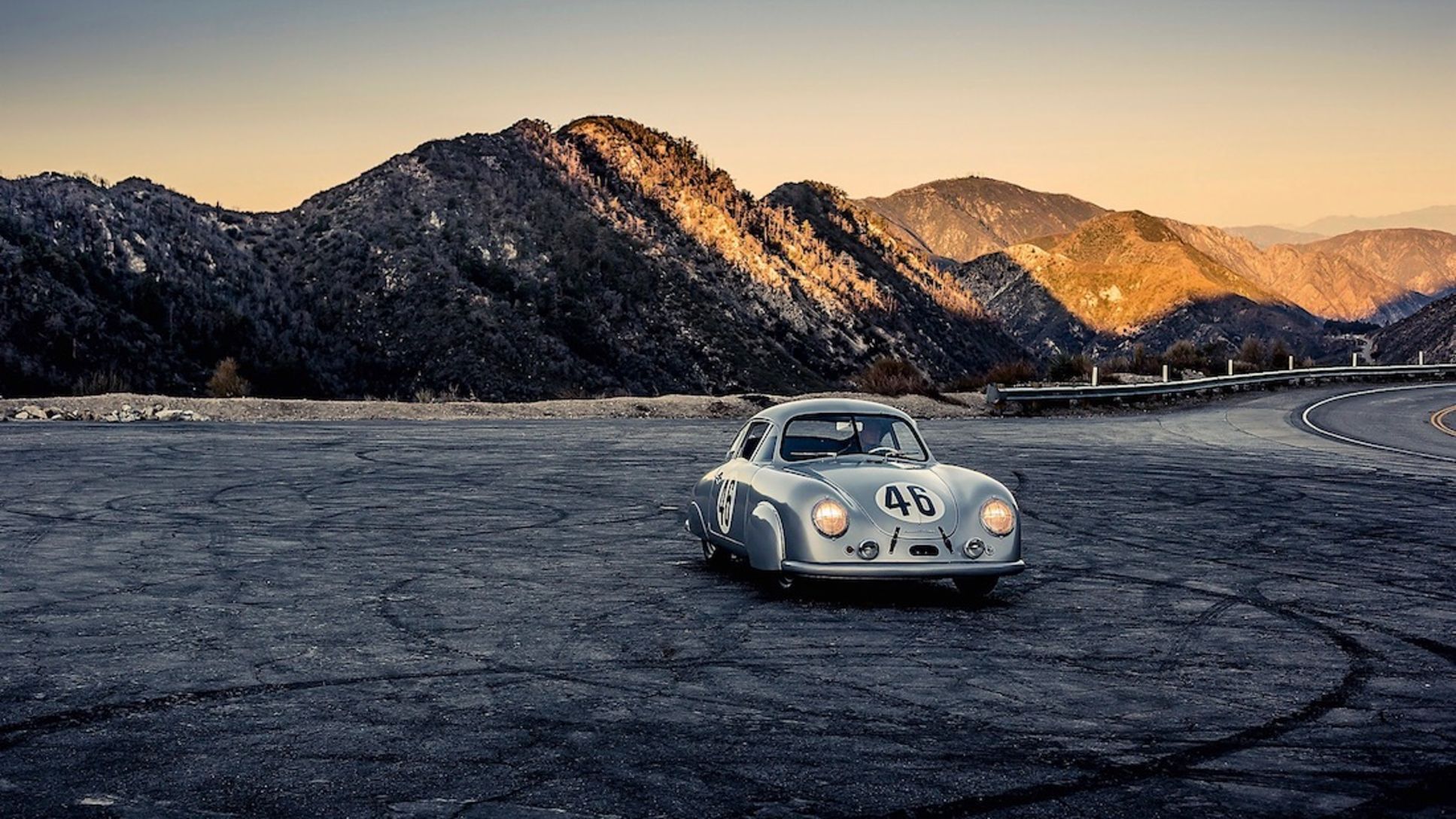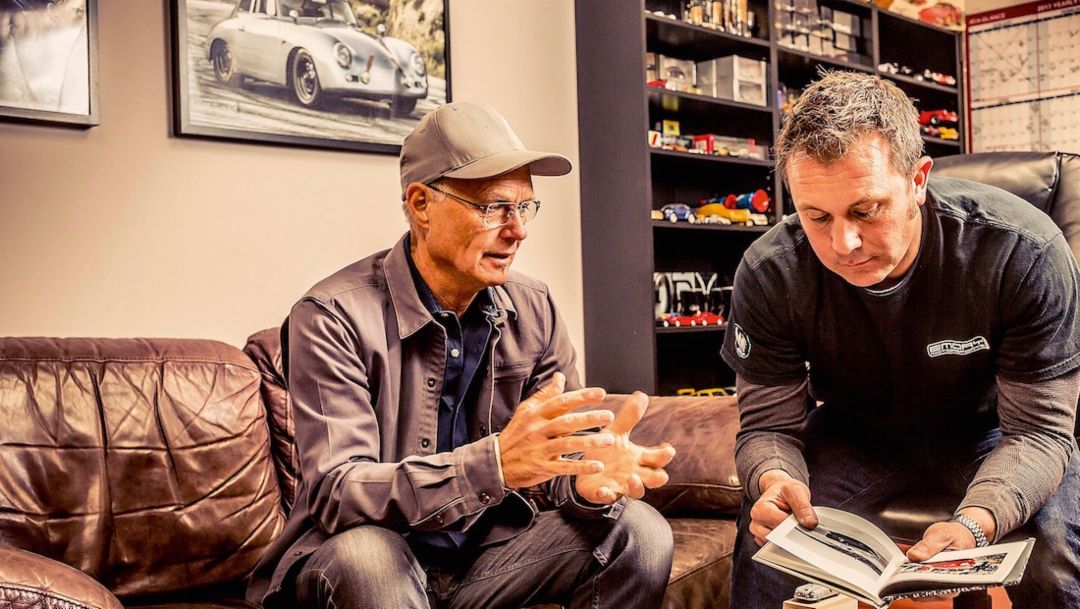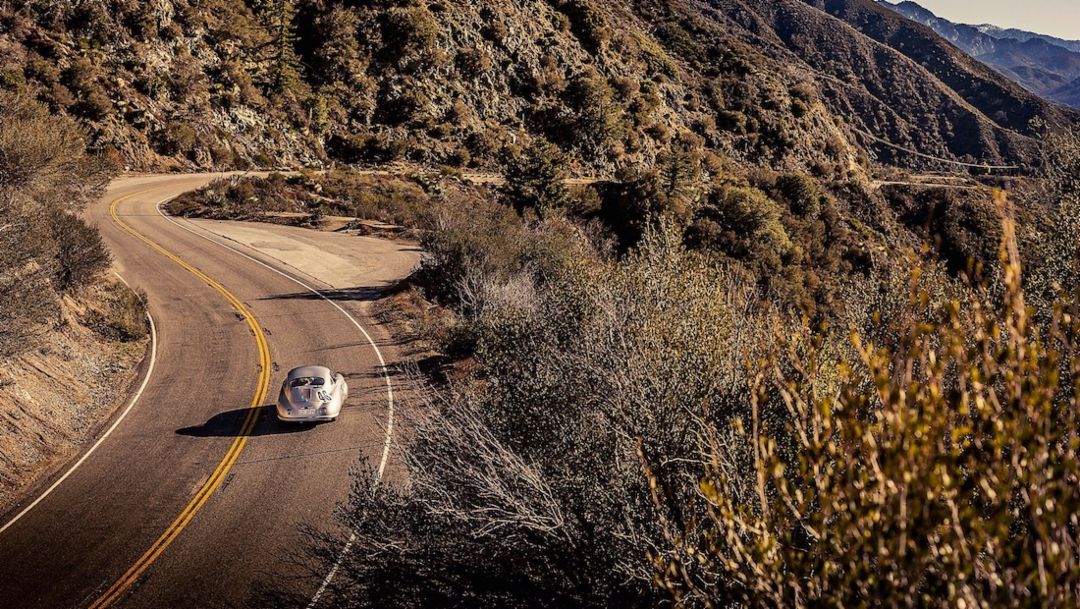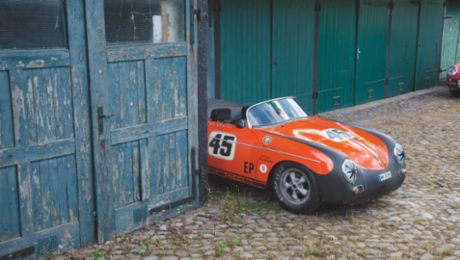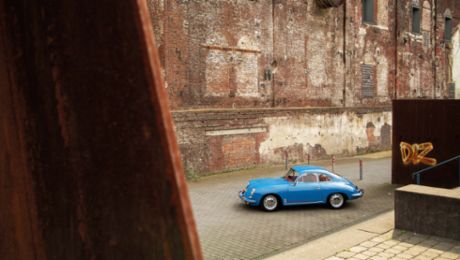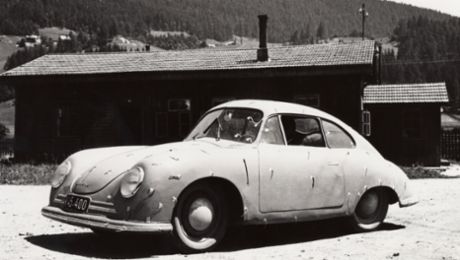Everyone asks Cameron Healey the same questions. Is his car real? What is the strange story behind the conversion into a Spyder? The slender giant answers them in a calm, gentle voice. He is familiar with it, knows this doubt. In himself. Because when he bought a small red 356 made of aluminium and without a roof in 2009, he had actually just fallen in love with this very car. It had belonged to Chuck Forge since 1957. And insiders knew that it was a very early 356. But how early and with what kind of history – that only became apparent when Chuck, together with Porsche outlaw Rod Emory, took it for restoration in North Hollywood / Los Angeles. We have to go back a long way to understand what they found under the dark red luminescent paint.
Winter 1949, Gmünd/Carinthia. An entire company is making the move back to Stuttgart. Ferry Porsche's search for a car he was unable to find anywhere else resulted in the 356 "No. 1" Roadster. This was followed by 52 Gmünd coupés and convertibles made of aluminium. Porsche decides to move to Stuttgart to start series production. The vehicles are to be made of steel there. But there were still the early Gmünd vehicles made of aluminium – although lighter, they were more difficult to process. The last unfinished vehicle bodies were left behind. They were completed by wage workers at Tatra in 1950 and later delivered to Zuffenhausen. These bodies included the 356/2-063.
The Paris Motor Show in October 1950 was to breathe new life into the aluminium coupé. It quickly gained importance, because Auguste Veuillet and Charles Faroux – one an entrepreneur (Sonauto) and racing driver, the other a co-founder and from 1923 to 1956 race director of the 24 Hours of Le Mans – gave Ferdinand Porsche a good excuse to enter the 1951 race. This was a major undertaking for the still young company!
Preparations did not get off to an auspicious start. Three accidents during test drives, training runs and track inspections left just one car remaining: 063. Auguste Veuillet and Edmond Mouche started the race in it on 23 June 1951. The race was overshadowed by heavy rain and serious accidents. But the 46 hp car with race number 46 ran like clockwork, setting its best lap time of 5:44.7 minutes on lap 158, which corresponds to an average of almost 141 km/h. As they passed the chequered flag, Veuillet/Mouche achieved victory in their class and finished 20th overall.
“I couldn’t believe it at first, but all the evidence suggests it’s a 063.” Cameron Healey
And after that? Two months later, 063 took part in the Liège-Rome-Liège race. The turn signals were moved further to the outside to make room for supertone horns and more powerful auxiliary lights. The start number for this race: 16. Overall ranking: 10. Just over a month later, the 063 set three international records in record-breaking driving trials in Montlhéry. But this did not lead to sentimentality at Porsche. The 063 became one of three 356 SLs that were exported to the US at the behest of Max Hoffman after being comprehensively repaired, repainted, and restored to series condition. One car is now in Mexico (054), one in the Collier Collection (055), and one now belongs to Cameron Healey. “I couldn’t believe it at first, but all the evidence suggests it’s a 063.” Cameron leans back. The leather sofa acknowledges the movement with a slight squeak. Rod Emory nods. Scratched markings on the panels, traces of the turn signals having been moved, a little damage on a wheel cover, which can also be seen on historic Le Mans photos – it all pointed towards the fact that the little red Spyder was much more than it seemed. Hofman had initially sold the car to Jack Rutherford, but he returned it.
The next owner was Johnny von Neumann. He drove in races and wanted to save some weight in 1952. He asked coach builder Emil Diedt to remove the roof. The car was transferred to different owners: Bill Wittington, Rick Gale, Ernie Spitzer, Dick Cotrell – and finally Chuck Forge in 1957. As with all previous owners, he also raced the car. At one point the 063 even had circular tail lights. He had the car restored in 1981.
It was a restoration in the style of the time. Nobody asked where or why, but simply gave the car a visually chic overhaul. On the other hand, there is nothing to complain about because all the work was done well. Forge had a small rollover bar installed in order to participate in historic races. The car was in this state when Cameron first came across it. He kept in touch with Forge over the years. When he died in 2009, Cameron was able to acquire the 063.
It was then that Rod Emory noticed the inconsistencies. Cameron dived into the archive in Zuffenhausen, where important documents soon came to light. When it was clear that this was likely to be the Le Mans class winner, Rod measured the other two 356 SLs with a laser, created wooden moulds and hammered out a new roof using tools from the 1940s. It was intended to be an authentic restoration. And it worked. 063 could enjoy a new lease of life.
Cameron sets out with Highway No. 2 stretching out ahead of him. The little silver Porsche follows its twists and turns, as if it were an allegory for the car’s life. We follow it first with our eyes, then our ears, then our heart. Hope to see you again. Take care!
Info
Text first published in the magazine Porsche Classic "Special Edition – 70 years of Porsche race cars".
Text Thorsten Elbrigmann // Photograph Theodor Barth
Copyright: The image and sound published here is copyright by Dr. Ing. h.c. F. Porsche AG, Germany or other individuals. It is not to be reproduced wholly or in part without prior written permission of Dr. Ing. h.c. F. Porsche AG. Please contact newsroom@porsche.com for further information.
